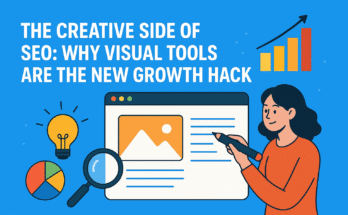Search Engine Optimization, or SEO, once a niche corner of digital marketing, has grown into a major driving force behind online visibility and branding. Businesses have leveraged traditional SEO tactics for years, but the online marketplace is changing, demanding a revised approach. Keywords and backlinks, while still important, no longer hold the exclusive power they once did. It’s time for businesses to rethink their SEO strategies to stay relevant in a competitive environment.
Table of Contents
Understand User Intent
Simply stuffing keywords into your content might have worked a decade ago, but today’s search algorithms prioritize understanding user intent. Google and other search engines are now focusing on delivering results that best match what users are truly after. Whether it’s answering a question, seeking a product, or finding a service, interpreting and aligning with user intent is crucial. Businesses need to get inside the mind of the consumer to craft content that answers their needs directly and effectively. The challenge lies in anticipating what potential customers are looking for even before they search, a task that requires constantly observing market trends and user behavior. Using analytics tools to monitor how visitors interact with your website and which areas of your page gain maximum engagement can provide invaluable insights. This data-driven approach allows businesses to remain adaptive, meeting expectations and predicting needs effectively.
Engaging with specialized services can further enhance these efforts. Companies like Canada SEO provide tailored strategies to improve user engagement and understand the nuances of search behaviors. Utilizing such resources can bridge the gap between what users expect and what businesses deliver, ensuring they remain top-of-mind in the digital sphere.
Focus on Quality Over Quantity
Content quantity was once thought to be the holy grail of SEO success. The belief was simple—the more content, the better the chances of ranking higher. This strategy is outdated. Today, fewer pieces of detailed, high-quality content hold far more value than numerous low-quality articles. Unique insights, comprehensive information, and insightful analysis trump volume. This shifts the focus from churning out content en masse to delivering value with every word typed. In addition to ensuring quality, fostering authenticity can make all the difference. Audiences seek genuine voices as they navigate abundant digital noise, and content that resonates emotionally tends to foster loyalty. Authentic storytelling, credible sources, and relatable scenarios are key ingredients in strengthening your brand’s connection with its audience.
Embrace Comprehensive Content
Long-form content is becoming increasingly favored by search engines, which aligns with providing in-depth solutions to users. And this isn’t only about length. Comprehensive content explores topics thoroughly, enhances user satisfaction, and keeps visitors on-page longer. By focusing on complete guides, well-researched articles, and thorough how-to posts, businesses can increase their credibility and trust in the eyes of both users and search engines. Your expertise and in-depth understanding of the topic should shine through every article you publish, positioning your brand as an authority in its field. Partnering with industry experts for guest articles or quoting reputable sources can further bolster your content’s credibility. Creating a two-way dialogue where readers can leave feedback and your brand can respond adds an interactive layer, fostering community engagement and creating lasting relationships.
Page Experience Matters More Than Ever
Search engines have pivoted towards rewarding better user experiences on websites. Elements such as page load speed, mobile compatibility, navigation ease, and overall user-friendliness are paramount. A page that takes ages to load or isn’t mobile-responsive can lead users to abandon it before they’ve even engaged with the content. It’s imperative for businesses to ensure their websites are not only informative but also pleasant to use. Enhancing page experience doesn’t stop at having a responsive design. Integrating user feedback into website design and utility can lead to significant improvements. Frequent user testing and design iteration keep websites efficient and engaging, ensuring users’ needs are consistently met while removing potential barriers to interaction.
Engage Through Video Content
Video content is a runaway train, soaking up more internet bandwidth than ever before. It’s a storytelling tool that appeals to modern users’ preferences for visual information consumption. From tutorials to product reviews, videos can significantly boost a site’s visibility. To harness this potential, businesses must think beyond written content and invest in quality video production, making sure it resonates with their target audience. Although production quality plays a role, the strategic use of video content across platforms can amplify its impact. Interactive and live video formats, including Q&A sessions, virtual tours, and panel discussions, offer more engagement opportunities. Furthermore, regularly tracking performance metrics like views and shares will inform a brand’s efforts, refining strategies to align videos closely with audience preferences. The versatility of video also offers new ways to repurpose content, turning complex text articles into explainer videos or animated shorts. Such adaptations not only prolong a content’s lifecycle but incentivize sharing across different mediums, enhancing reach and promoting organic growth.
Utilize Structured Data
Structured data helps search engines understand the content on your pages, leading to richer search result snippets, like product information or customer ratings. Leveraging such data can amplify content visibility and engagement, making it a necessary tool in any SEO toolbox. As algorithms grow more sophisticated, structured data will enable companies to stand out amidst a sea of online information. Taking a proactive approach to structured data involves staying current with SEO best practices and emerging schema types. As new types of rich results surface, opportunities to optimize grow in tandem. The application of structured data remains flexible and innovative, accommodating a vast array of needs and ensuring your business captures the attention it deserves.
In Summary
The way businesses approach SEO should be more refined and forward-thinking than ever. By understanding user intent, prioritizing quality, optimizing experiences, integrating video, utilizing structured data, and honoring local SEO, they ensure their relevance in an ever-shifting digital marketplace. Times have changed, and so too must our strategies.


